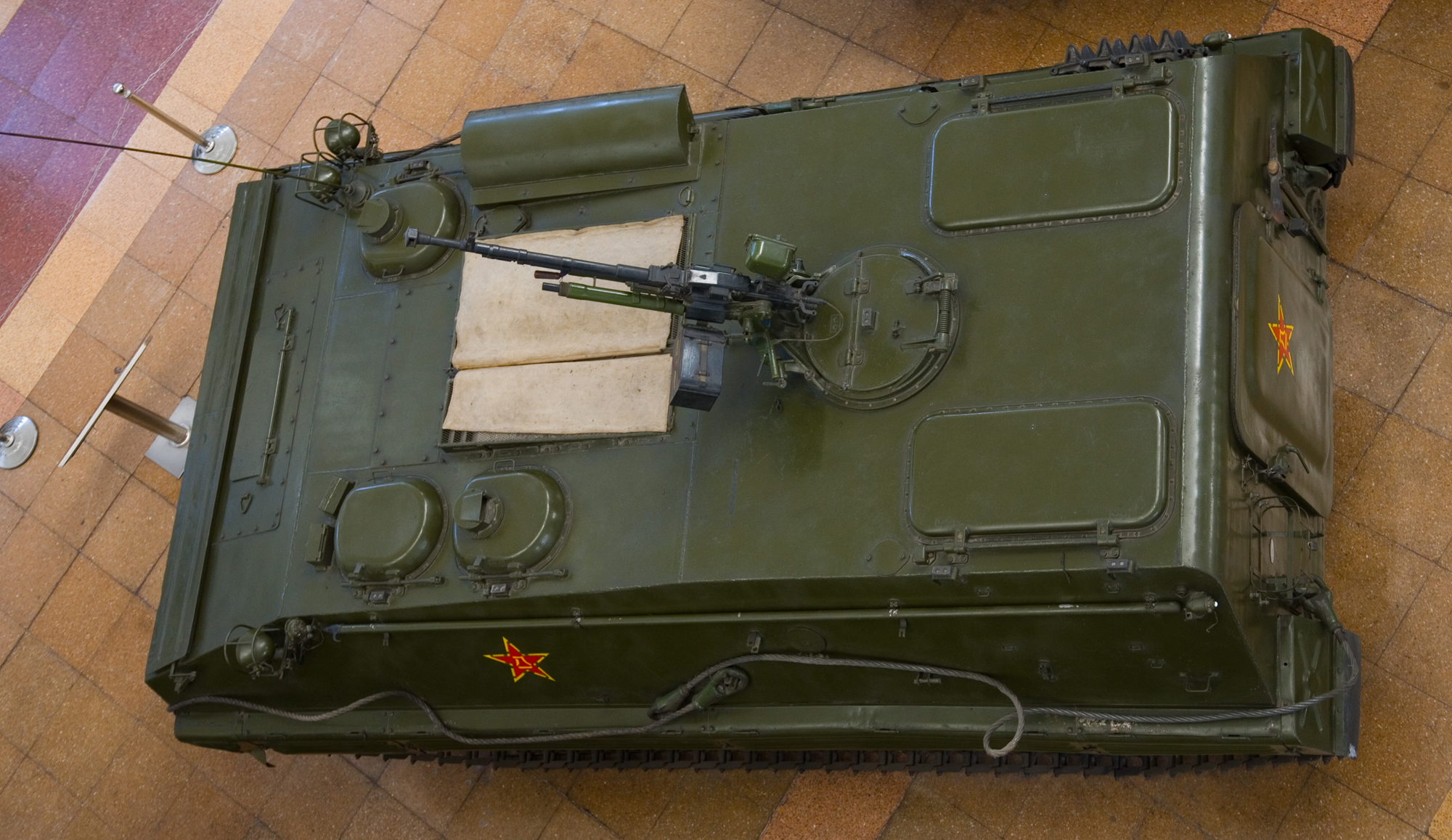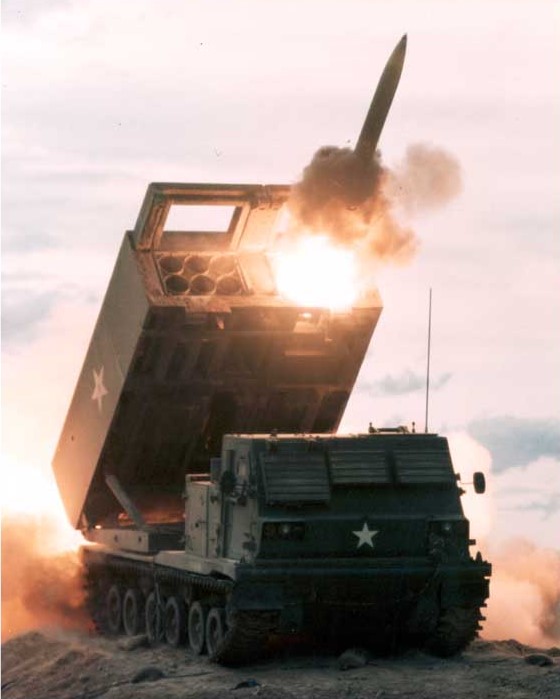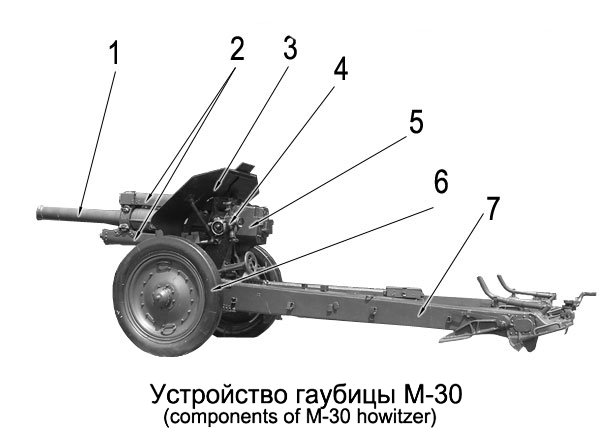|
Type 63 (armoured Personnel Carrier)
The Type 63 (industrial designation YW531) is a Chinese armoured personnel carrier that entered service in the late 1960s. It was the first armoured vehicle designed in China without Soviet assistance. The design is simple and is comparable to other APCs of its time such as the M113. Approximately 8,000 all types and variants were produced by Norinco. It also equips several armies around the world and has seen action in different conflicts including the Vietnam War, the Sino-Vietnamese War, the Iran–Iraq War, and the Gulf War. Development In 1958 July, the central government of the People's Republic of China proclaimed in a national scientific development strategic plan that called for a tracked armoured personnel carrier that can be ready for mass production in 1960, in less than two years, and Yong Ding Machinery Factory (永定机械厂) – later incorporated into the NORINCO group was to be responsible for the manufacturing of the new APC. The design work was left to No. ... [...More Info...] [...Related Items...] OR: [Wikipedia] [Google] [Baidu] |
Armoured Personnel Carrier
An armoured personnel carrier (APC) is a broad type of armoured military vehicle designed to transport personnel and equipment in combat zones. Since World War I, APCs have become a very common piece of military equipment around the world. According to the definition in the Treaty on Conventional Armed Forces in Europe, an APC is "an armoured combat vehicle which is designed and equipped to transport a combat infantry squad and which, as a rule, is armed with an integral or organic weapon of less than 20 millimetres calibre." Compared to infantry fighting vehicles (IFVs), which are also used to carry infantry into battle, APCs have less armament and are not designed to provide direct fire support in battle. Infantry units which travel in APCs are known as mechanized infantry. Some militaries also make a distinction between infantry units which use APCs and infantry units which use IFVs, with the latter being known as armoured infantry in such militaries. History The genesis o ... [...More Info...] [...Related Items...] OR: [Wikipedia] [Google] [Baidu] |
Type 63-2 (WZ531) 20131004
Type may refer to: Science and technology Computing * Typing, producing text via a keyboard, typewriter, etc. * Data type, collection of values used for computations. * File type * TYPE (DOS command), a command to display contents of a file. * Type (Unix), a command in POSIX shells that gives information about commands. * Type safety, the extent to which a programming language discourages or prevents type errors. * Type system, defines a programming language's response to data types. Mathematics * Type (model theory) * Type theory, basis for the study of type systems * Arity or type, the number of operands a function takes * Type, any proposition or set in the intuitionistic type theory * Type, of an entire function ** Exponential type Biology * Type (biology), which fixes a scientific name to a taxon * Dog type, categorization by use or function of domestic dogs Lettering * Type is a design concept for lettering used in typography which helped bring about modern textual printin ... [...More Info...] [...Related Items...] OR: [Wikipedia] [Google] [Baidu] |
Type 85 AFV
The Type 85 is a tracked armoured fighting vehicle produced by Chinese company Norinco (industrial index: Type YW531H). It is an improved version of the Type 63 armoured personnel carrier. The vehicle is bigger, has additional firing ports and periscopes, a longer chassis with an additional road wheel on each side, and is equipped with an NBC protection system. The Type 85 series was developed in 1985, exclusively for the export market; for the PLA, the very similar Type 89 AFV was designed. The main user of the Type 85 series are the Royal Thai Armed Forces who received their first vehicles in 1987. Currently, the improved Type 90 AFV is offered for export. Description The hull is made of welded steel, and provides protection against small arms fire. The vehicle carries a maximum of 15 including crew. The driver sits in the front left of the hull, and has a single piece hatch, which opens to the left. The driver is provided with two day periscopes which cover the front an ... [...More Info...] [...Related Items...] OR: [Wikipedia] [Google] [Baidu] |
Mortar (weapon)
A mortar is usually a simple, lightweight, man-portable, muzzle-loaded weapon, consisting of a smooth-bore (although some models use a rifled barrel) metal tube fixed to a base plate (to spread out the recoil) with a lightweight bipod mount and a sight. They launch explosive shells (technically called bombs) in high-arcing ballistic trajectories. Mortars are typically used as indirect fire weapons for close fire support with a variety of ammunition. History Mortars have been used for hundreds of years. The earliest mortars were used in Korea in a 1413 naval battle when Korean gunsmiths developed the ''wan'gu'' (gourd-shaped mortar) (완구, 碗口). The earliest version of the ''wan'gu'' dates back to 1407. Choi Hae-san (최해산, 崔海山) (1380–1443), the son of Choe Mu-seon (최무선, 崔茂宣) (1325–1395), is generally credited with inventing the ''wan'gu''. In the Ming dynasty, general Qi Jiguang recorded the use of a mini cannon called the Hu dun pao that was simi ... [...More Info...] [...Related Items...] OR: [Wikipedia] [Google] [Baidu] |
Deutz AG
Deutz AG is a German internal combustion engine manufacturer, based in Porz, Cologne, Germany. History The company was founded by Nicolaus Otto, the inventor of the four-stroke internal combustion engine, and his partner Eugen Langen on 31 March 1864, as N. A. Otto & Cie, later renamed to Gasmotoren-Fabrik Deutz after moving operations in 1869 from Cologne to Deutz, located on the opposite side of the Rhine, also called "the wrong side" in Cologne. In the early years, Otto and Langen were interested only in producing stationary engines, not automobiles. Georgano, G.N. ''Cars: Early and Vintage, 1886-1930''. (London: Grange-Universal, 1985) The technical director, Gottlieb Daimler, was eager to produce automobiles. In the middle of the 1870s, it was suggested that he transfer to the company's St. Petersburg factory to reduce his influence. He resigned, taking Wilhelm Maybach with him. Deutz also produced agricultural machines such as combine harvesters and tractors, as we ... [...More Info...] [...Related Items...] OR: [Wikipedia] [Google] [Baidu] |
Norinco Type 89 IFV
The Norinco Type 89 tracked armoured fighting vehicle is a Chinese armoured personnel carrier. It was developed from the earlier export market Type 85 AFV vehicle. It entered service in the late 1990s and was first shown publicly in 1999. There are approximately 1,000 in service. It has the industrial index of WZ534 and although it was mainly developed for the PLA, there is also an export version YW534. In the 1990s a new designator system was introduced in the PLA and the Type 89 APC is nowadays known as ZSD-89. Description When compared to the Type 85, the Type 89 is slightly larger and heavier. The hull is made of welded steel, and provides protection against small arms fire. The vehicle carries a maximum of 15 including crew. The driver sits in the front left of the hull, and has a single piece hatch, which opens to the left. The driver is provided with three day periscopes which cover the front and right of the vehicle. One of the driver's periscopes can be replace ... [...More Info...] [...Related Items...] OR: [Wikipedia] [Google] [Baidu] |
BM-14
The BM-14 (BM for ''Boyevaya Mashina'', 'combat vehicle'), is a Soviet-made 140mm multiple launch rocket system (MLRS), normally mounted on a truck. The BM-14 can fire 140 mm M-14 rockets with a high-explosive fragmentation warhead, a smoke warhead or a chemical warhead. It is similar to the BM-13 "Katyusha" and was partly replaced in service by the 122 mm BM-21 Grad. Launchers were built in 16 and 17-round variants. The rockets have a maximum range of . The weapon is not accurate as there is no guidance system, but it is extremely effective in saturation fire. Variants * BM-14 (8U32) - 16-round model (two rows of 8), launcher mounted on the ZIS-151 truck. Entered service in 1952. Also known as BM-14-16. ** BM-14M (2B2) - modified model, mounted on the ZIL-157. ** BM-14MM (2B2R) - final upgrade, mounted on the ZIL-131. * BM-14-17 (8U35) - 17-round (8+9 launch tubes) launcher, mounted on the GAZ-63A. Developed in 1959. This launcher was also used on naval vessels, for exampl ... [...More Info...] [...Related Items...] OR: [Wikipedia] [Google] [Baidu] |
Rocket Artillery
Rocket artillery is artillery that uses rocket explosives as the projectile. The use of rocket artillery dates back to medieval China where devices such as fire arrows were used (albeit mostly as a psychological weapon). Fire arrows were also used in multiple launch systems and transported via carts. First true rocket artillery was developed in India by the Kingdom of Mysore. In the late nineteenth century, due to improvements in the power and range of conventional artillery, the use of early military rockets declined; they were finally used on a small scale by both sides during the American Civil War. Modern rocket artillery was first employed during World War II, in the form of the German Nebelwerfer family of rocket ordnance designs, Soviet Katyusha-series and numerous other systems employed on a smaller scale by the Western allies and Japan. In modern use, the rockets are often guided by an internal guiding system or GPS in order to maintain accuracy. History Early history ... [...More Info...] [...Related Items...] OR: [Wikipedia] [Google] [Baidu] |
Type 67 Machine Gun
The Type 67 is a general-purpose machine gun, chambered in 7.62×54mmR used by the Chinese People's Liberation Army. History The Type 67 machine gun was developed as a lightweight replacement for the Type 53 ( SG43) and Type 57 (SGM) medium 7.62 mm machine guns in 1959. The first tests for the Type 67 started in 1963. Research on the weapon was led by Dr. Duo Ying Jian from the Beijing Industrial Technology Academy. After Soviet-Chinese relations began to break down, there were concerns that further technological assistance would not be rendered, including supplying them with Soviet-made PKMs. The first combat use of the Type 67 was with Mujahideen forces fighting in Afghanistan fighting against pro-Soviet forces in 1980. These found their way through smuggling in Pakistani soil. In the Syrian Civil War, the Type 67 is found in use with Syrian opposition forces fighting against government forces from 2015. It is suggested these were likely captured from Syrian troops. It has a ... [...More Info...] [...Related Items...] OR: [Wikipedia] [Google] [Baidu] |
Howitzer
A howitzer () is a long- ranged weapon, falling between a cannon (also known as an artillery gun in the United States), which fires shells at flat trajectories, and a mortar, which fires at high angles of ascent and descent. Howitzers, like other artillery equipment, are usually organized in a group called a battery. Howitzers, together with long-barreled guns, mortars, and rocket artillery, are the four basic types of modern artillery. Mortars fire at angles of elevation greater than 45°, and are useful for mountain warfare because the projectile could go over obstacles. Cannons fire at low angles of elevation (<45°), and the projectile lands much faster at its target than it would in the case of a mortar. But the cannon is not useful if there is an obstacle like a hill/wall in front of its target. Etymology The English word ''howitzer'' comes from the Czech word , from , 'crowd', and is in turn a borrowing from the Middle High German word or (mode ...[...More Info...] [...Related Items...] OR: [Wikipedia] [Google] [Baidu] |
122 Mm Howitzer M1938 (M-30)
The 122 mm howitzer M1938 (M-30) (GRAU index: 52-G-463) was a Soviet 121.92 mm (4.8 inch) howitzer. The weapon was developed by the design bureau of Motovilikha Plants, headed by F. F. Petrov, in the late 1930s, and was in production from 1939 to 1955. The M-30 saw action in World War II, mainly as a divisional artillery piece of the Red Army (RKKA). Captured guns were also employed later in the conflict by the German Wehrmacht and the Finnish Army. Post World War II the M-30 saw combat in numerous conflicts of the mid- to late twentieth century in service of other countries' armies, notably in the Middle East. Development In 1930 Red Army (RKKA) authorities started to look for a new divisional-level howitzer to replace the pre-World War I 122 mm howitzer M1909 and 122 mm howitzer M1910. Although both pieces were eventually modernized, resulting in the 122-mm howitzer M1909/37 and the 122-mm howitzer M1910/30 respectively, these upgrades did not address some short ... [...More Info...] [...Related Items...] OR: [Wikipedia] [Google] [Baidu] |





